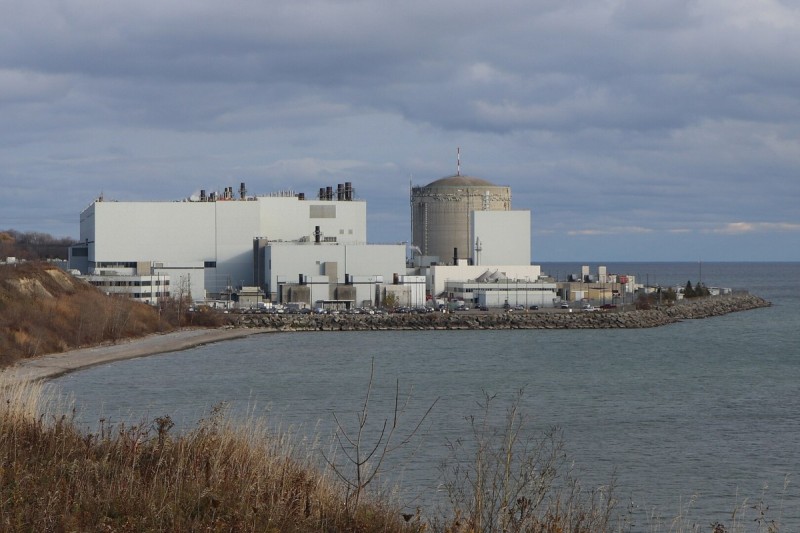The recent Broadbent Institute and Mowat Centre report, Step-Change: Federal Policy Ideas Towards a Low-Carbon Canada, appears at a critical time. Intended to provide concrete examples of mitigation policies that might be adopted in the long run by the new federal government, it is also a timely reminder of the need for Canada to revise its approach to negotiating an agreement in Paris.
To be seen as an effective force at the UN climate change summit Paris, Canada needs to modify its Intended Nationally Determined Contribution (INDC) — an emission reductions target and strategy submitted to the United Nations Framework Convention on Climate Change (UNFCCC) in May of this year by the Harper government, part of a final set of submissions to be used as a basis for the Paris Agreement.
(As of October 1, there were 128 INDC submissions, reflecting 146 countries and covering around 87% of global emissions in 2010 and 88% of global population). Tabling a revised INDC ahead of Paris would be an important gesture, putting Canada in the forefront of the 180+ nations attending the conference, and making up for the negative and disruptive role carved out by the Harper government in previous Kyoto meetings.)
The existing Canadian INDC outlines measures that would in theory lead to an overall reduction in greenhouse gas emissions of 30% below 2005 levels by 2030. The document is notably un-ambitious and has been rated “inadequate” by Climate Action Tracker (CAT) in its efforts to assess and rate INDCs from key countries.
Canada based its INDC target on adjustments to existing regulations, for example elimination of coal-fired power stations and compliance with US-based vehicle emission standards. It proposed regulatory initiatives for other sectors, for example methane emissions from the oil and gas sector and emissions from natural gas fired electricity, chemicals and nitrogen fertilizers.
Not surprisingly, there was only passing reference to oil sands emissions, proposing an increased focus on “…climate-related investments in innovative production technologies to (improve) environmental performance in the oil sands.” The INDC provides no specific link between such actions and the proposed 30% target—a critical weakness in the Canadian INDC, given that oil sands could contribute up to 14% of Canada’s emissions by 2020.
Can Canada revise its INDC “contributions” and introduce plausible and realistic measures in time for Paris? The Broadbent/Mowat report provides a basis for such an initiative but needs to be re-formulated to provide government negotiators with a realistic and plausible alternative to the existing INDC. Three of the main policy recommendations can provide a basis for this, albeit with some tweaking: accelerated coal phase-out; green building compact; and a clean transportation strategy.
A fourth recommendation, the so-called “Bio-Strategy,” covering “best practices in the agricultural and forestry sectors,” might also be included to address CAT’s concern that the Canadian INDC include “more details” on land-use and forestry gains.
The report’s coal phase-out concept is based on the assumption that provincial and private utilities in Alberta, Saskatchewan and the Maritimes — the remaining users of coal-fuelled electricity — will agree to gradually phase out coal and replace it with natural gas or renewables. The main difference between this and the INDC proposal is one of degree: making regulations more stringent and changing the “useful life” allowance to ensure total phase-out of power plants built between 1974 and 1986 by 2019 in order to achieve the 2030 target. This small tweak can easily be incorporated in the revised INDC.
The second and third recommendations are entirely absent from the INDC document. Energy efficiency is mentioned only in passing in the INDC, essentially as a pat on the back by the Conservatives for their various “green” investments, but with no indication as to how much additional investment in efficiency would be needed to achieve the INDC targets.
Transportation also receives scant notice, mentioned only in connection with the government’s support for “…emerging technologies and federal regulatory action (which) has limited emissions in the transportation sector, despite growth in vehicle fleets.”
By comparison, the Broadbent/Mowat paper outlines a more coherent programme (the Green Building Compact) for energy efficiency in buildings, using existing regulations and reviving the defunct Eco-Energy initiative. It also proposes a low-carbon approach to transport, for example through a progressive Vehicle Emissions Tax and a Zero Emissions Mandate for a portion of new vehicle production.
Disappointingly, the report does not include increased support for mass transit, an area in which the Conservative government has been active, albeit primarily through supplements to municipal and provincial financing. Still, by going beyond simple regulation of vehicle fleet emissions, the B/M paper breaks new ground and provides a useful approach to reducing transport emissions, which comprise 23% of Canada’s total.
These latter two recommendations would need to be added, with slight adjustments, to the limited set of programmes in the current INDC.
Finally, it is crucial that Canada’s INDC provides a serious, quantifiable strategy for reducing oil sands emissions — either by curtailment of future expansion, or through improved extractive and refining efficiencies. Without a serious effort to address this major emissions source by providing specific policy recommendations, a revised INDC will lack credibility in the Paris discourse.
This leaves us with a pressing question: How will these changes be incorporated in government’s preparations for Paris? And can it be done by tabling a pre-Paris revision to the INDC? As it happens, protocols for reviewing and amending INDCs are built into the Lima Call for Climate Action, endorsed at COP20 in 2014.
As of November 1, the UNFCCC has also presented a summary review of all INDCs that made clear the aggregate effect of national contributions would still result in a 2.7°C increase in global temperature — well beyond the target of 2°C agreed at Copenhagen, though slightly better than an earlier assessment which placed the contributions at 3°C.
So while Lima does not specifically allow for modifications to INDCs prior to Paris, it does clearly endorse the need for such modifications in response to periodic UNFCCC reviews. Canada should therefore use the failure of current INDCs to meet the 2°C target as a justification for carrying a revised version to Paris, using the Mowat/Broadbent document as a framework for its detailed submission, with the addition of an aggressive and coherent strategy for reducing oil sands emissions.





